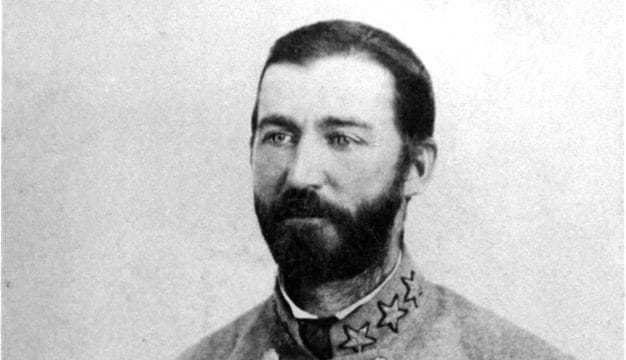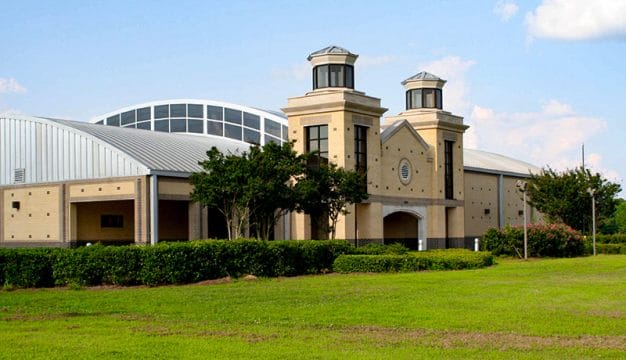William Forney
William Henry Forney (1823-1894) was a Democratic representative to Congress from 1875 to 1893. Forney served in the U.S. Army in the Mexican War and for the Confederate States of America Army in the Civil War prior to his distinguished legal and political careers.
 John Horace Forney
Forney was born on November 9, 1823, on Mount Welcome in Lincolnton, Lincoln County, North Carolina, as the third of nine children born to Jacob and Sabina Swope (Hoke) Forney. He was the grandson of Revolutionary War veteran Capt. Peter Forney, nephew of North Carolina congressman Daniel Munroe Forney and brother of future Confederate general John Horace Forney. In 1835, the family relocated to Jacksonville, Calhoun County, where Forney and his brothers obtained their early education from tutors. He attended the University of Alabama and earned a bachelor’s degree in 1844. After graduation, he studied law at the Jacksonville office of his older brother Daniel.
John Horace Forney
Forney was born on November 9, 1823, on Mount Welcome in Lincolnton, Lincoln County, North Carolina, as the third of nine children born to Jacob and Sabina Swope (Hoke) Forney. He was the grandson of Revolutionary War veteran Capt. Peter Forney, nephew of North Carolina congressman Daniel Munroe Forney and brother of future Confederate general John Horace Forney. In 1835, the family relocated to Jacksonville, Calhoun County, where Forney and his brothers obtained their early education from tutors. He attended the University of Alabama and earned a bachelor’s degree in 1844. After graduation, he studied law at the Jacksonville office of his older brother Daniel.
In 1846, with the onset of the Mexican War, Forney enlisted as a first lieutenant in Col. John R. Coffey’s First Regiment of the Alabama Volunteers and participated in the siege of Vera Cruz. After a year of military service, he returned to Jacksonville and continued studying at the law office of Thomas A. Walker. He was admitted to the Alabama State Bar in 1848 and received a master’s degree from the University of Alabama in 1853. He formed a law partnership with Gen. James B. Martin in Jacksonville and served as trustee of the University of Alabama from 1851 to 1860. On October 4, 1854, Forney married Mary Eliza (Woodward), with whom he would have five children. During the 1850s, he worked as a businessman, lawyer, and planter in Calhoun, Talladega, and Marengo Counties. He was elected to the Alabama House of Representatives from Calhoun County in 1859.
After Alabama seceded from the Union in January 1861, Forney enlisted as a captain of Company G of the 10th Alabama Infantry Regiment, known as the “Pope Walker Guards,” which was commanded by his older brother, Col. John Horace Forney. Forney fought in many notable battles in Virginia. In December 1861, he participated in the Battle of Dranesville, where he was wounded in the leg and spent two months recovering. He was promoted to the rank of major on December 21 and was elevated to lieutenant colonel on March 17, 1862, after rejoining his unit for the Peninsula Campaign. At the Battle of Williamsburg in May 1862, Forney was shot in the right shoulder, breaking a bone in his arm. While recovering at William and Mary College, which had been converted into a military hospital, he was captured by Union forces and was exchanged in September 1862. While in captivity, he was promoted to colonel on June 27, following the death of Col. John J. Woodward. He led the 10th Alabama Infantry at the battles of Fredericksburg (December 1862), Chancellorsville (May 1862), and Salem Church (May 1863), where he was slightly wounded in the leg again.
At the Battle of Gettysburg on July 2, he led his company as part of Gen. Cadmus Wilcox’s Brigade during a counterattack across Emmitsburg Turnpike near Plum Run and received wounds in the arm and chest. He was also shot in the right arm and left heel, the latter injury proving to be the most severe and lingering wartime wound. Forney was left behind when the Confederates retreated and taken to the Union’s Camp Letterman hospital, which was established after the battle. He was imprisoned for nearly 13 months and then was part of another prisoner exchange. He returned to his unit on crutches and led the company until the autumn of 1864. Forney temporarily commanded Cadmus M. Wilcox’s brigade during the Petersburg Campaign and led a brigade in William Mahone’s division following his promotion to brigadier general on February 15, 1865. He fought alongside his troops in the trenches of Petersburg and led them on the Confederate retreat to Appomattox Court House. There, Forney surrendered his brigade of 952 men alongside Gen. Robert E. Lee on April 12, 1865.
Despite his physical disabilities, Forney achieved a successful postwar legal and political career. He was elected to the Alabama state Senate in 1865 and 1866 before being removed from office by Republicans during Reconstruction. In 1869, he was a trustee in Calhoun College (now part of Jacksonville State University), serving as president in 1871. He maintained a law practice until 1875, when was elected to Congress as an at-large candidate from the state as a whole. In 1877, he was elected to represent the Seventh District, which consisted of 10 counties surrounding Calhoun and Etowah counties in northeast Alabama. He chaired the Committee on Expenditures in the Department of the Treasury, and was a member of several subcommittees, including Pension, Sundry Civil, Militia, Permanent Appropriations and chaired the Military Academy, Fortifications, the Army, District of Columbia, and Legislative, Executive, and Judicial. Forney did not seek re-nomination in 1892. His seat was taken by Democrat William Henry Denson
Pres. Grover Cleveland then appointed Forney to the Gettysburg Battlefield Commission, and he served on that body until his death in Jacksonville on January 16, 1894. His funeral was held at St. Luke’s Episcopal Church, and he was buried with military honors in Jacksonville City Cemetery. In 1957, the Alabama Historical Association commissioned a historical marker to honor the 10th Alabama Volunteers, and in 1963 the Gen. John H. Forney Historical Society erected a historical marker in Jacksonville to honor him. The Alabama Division of the United Daughters of the Confederacy named the Anniston chapter, the Gen. William H. Forney Chapter No. 468, in his honor.
Further Reading
- Compiled Service Records of Confederate Soldiers Who Served in Organizations from the State of Alabama. NARA. M311. Group 109. Roll 0193.
- William Henry Forney Papers, 1865-1894. University of North Carolina at Chapel Hill Libraries, Chapel Hill, North Carolina.
- Welsh, Jack D. Medical Histories of Confederate Generals. Kent, Ohio: Kent State University Press, 1995.



